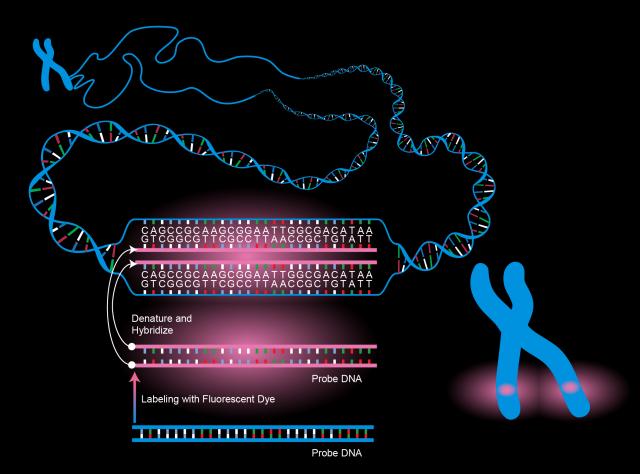Fluorescence In Situ Hybridization (FISH)
Fluorescence in situ hybridization (FISH) is a laboratory technique for detecting and locating a specific DNA sequence on a chromosome. The technique relies on exposing chromosomes to a small DNA sequence called a probe that has a fluorescent molecule attached to it. The probe sequence binds to its corresponding sequence on the chromosome. Courtesy: National Human Genome Research Institute

Source: .
http://www.genome.gov/
http://www.genome.gov/
License: Public Domain. If you are going to redistribute this image online, a hyperlink to the above source page is mandatory.
© 2007–2024 XoaX.net LLC. All rights reserved.
